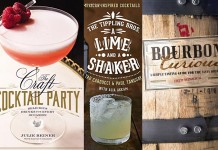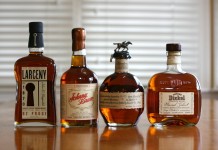
After getting some really positive feedback on our piece exploring the world of Cognac, I thought I’d do something similar with Tequila and Mezcal.
Like cognac, tequila refers to a spirit which must be distilled in a very specific part of the world. Originally called mezcal de tequila, this spirit is only tequila if it’s distilled in the Mexican state of Jalisco and it must be made from agave. The Mexican government has set up a registry of distilleries and each bottle of tequila must bear this registry number (referred to as a NOM or Normas Oficial Mexicana). This is extremely helpful when looking at bottles of tequila because you can quickly and easily see who distilled it and where. For example Yeyo Tequila has a NOM of 1414 which means it was distilled by Feliciano Vivanco y Asociados who also distill Muchote, Del Mio and Siembra Azul (among others).
Tequila is made from the blue weber variety of agave, a plant which takes 8-12 years from planting to harvest. Agave is not part of the cactus family, as it’s often mistakenly attributed; instead, it’s actually in the lily family. Other forms of mezcal use other species of the agave plant including espadín and tobalá (which cannot be cultivated and must be harvested from the wild).
The flavor profile of tequila and mezcal are influenced by a number of key variables:
- Type of agave plant – blue weber, espadí, tobalá or other agave
- What elevation the agave was grown – higher elevation agave has greater acidity, lower has more spice
- How the piñas are baked – steam, autoclave, baked in the ground
- How the sugar from the agave was extracted – milled and made into aguamiel or crushed by stone wheel
- How it was fermented – open air, yeast added, chemical fermeted
- If the agave fibers were fermented along with the sugar or not
- What kind of still was used in distillation (and how many times it was distilled) – pot or column still
- If it was aged in a barrel and which kind – french oak, white oak or bourbon barrel
- How long it’s aged
With so many variables there’s a huge range of tastes and qualities you can find with tequila. Tequila is general sold by how long it’s aged by the following classifications:
- Blanco – aged less than 59 days
- Reposado – aged 60 days to 1 year
- Añejo – aged 1-3 years
- Extra Añejo – aged 3 or more years
While tequila is often mass produced, mezcal (the non tequila kind) is still an extremely artisan product where taste and proof can vary from batch to batch. Mezcal often uses the smaller espadí agave that are baked in the ground in big lava rock pits. It may also be made from stone ground agave made by a huge wheel pulled by donkey and then left to ferment in open air barrels (with the fibers in the tank). Mezcal is then small batch pot stilled sometimes in very old clay stills. The tobalá-based mezcals are rarer in the US and much more expensive because the tobalá plant cannot be cultivated and is harvested from the wild mountain regions. The flavor profile of many mezcals are much more vegetal, smokey and spicy than their tequila counterparts.
I got this massive tequila and mezcal information download at a class I took by noted bartender Ricky Gomez at the Teardrop Lounge. This was accompanied by a blind tasting of over 16 tequilas and mezcals.

Of the 16 tequilas and mezcals, my favorites are:
Tequila
- 7 (Siete) Leguas Tequila Blanco – vegetal notes on the nose with nice pepper, green apple and asparagus on the taste – a very enjoyable sipping blanco tequila. Priced at $40 a bottle.
- Casa Noble Tequila Reposado – sweet caramel, toffee and marshmallow on the nose leads to a peppery chocolate taste. Delicious and easily sipped after a nice meal. Priced at $50 a bottle.
- El Tesoro Anejo – a briny, salty and wet pavement nose leads to a very big bodied taste with caramel and soft pepper and some fantastic vegetal undertones. Priced at $50 a bottle.
Mezcal
- Del Maguey San Luis del Rio – WOW! A very tropical nose leads to a brilliantly smokey taste with notes of caramel, vanilla, apple and (yeah) bacon. With nice vegetal tones and minerality, this mezcal is simply superb and one of my favorite I’ve tasted. Priced at $70 a bottle.
- Del Maguey Minero – a nice tropical nose with sour apple, chipotle pepper, agave, smoke and cheese notes. It’s a very tasty mezcal with great complexity. Priced at $70 a bottle.
- Del Maguey Chichicapa – firmly standing between the San Luis del Rio and the Minero, this mezcal captures all the smokey goodness of the del Rio with all the savory cheese notes of the Minero. If I were to buy one bottle of tequila or mezcal from the tasting this one would be it! Priced at $70 a bottle.
The evening was finished off with a fantastic round of margaritas using the margarita recipe from Tommy’s Tequila Bar in San Francisco:
Tommy’s Margarita
2 oz Tequila (Casa Noble Blanco)
1 lime juice
1 agave syrup (1:1 nector/water)
shake and strain over cracked ice.
















